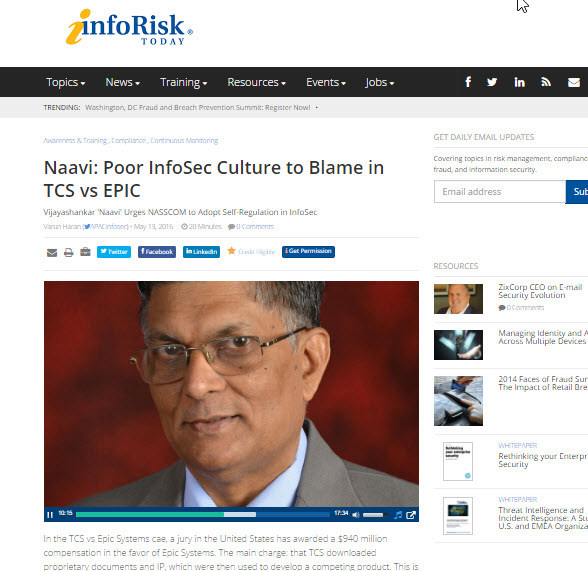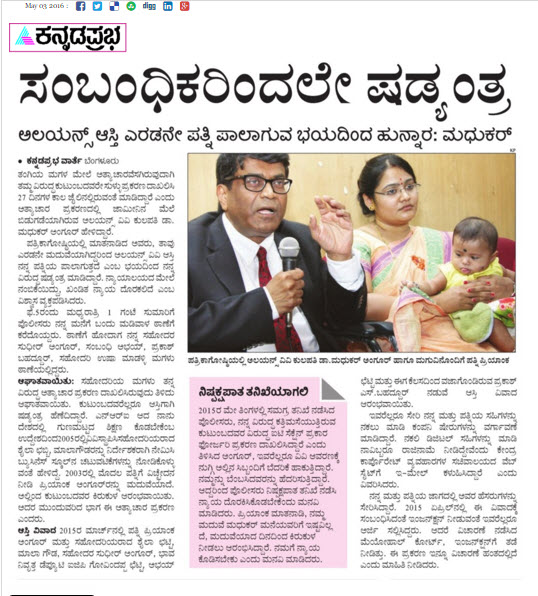When on July 16, 2013, naavi.org pointed out in its article “Loans Through SMS?”,it was the first time that it was pointed out that some thing fishy was going on under the website: http://www.cgtmse-govt.in . It was pointed out that the website could be a fraudulent site trying to lure innocent loan seekers and impersonated a Government website.
Subsequently, one of the readers (Mr Vinod) made some personal investigation and confirmed that the physical addresses given on the site was non existent. At that time the main focus was that there was impersonation of a website cgtmse-govt.in. It was repeatedly pointed out that Government should take action in bringing down this phishing site.
However, Government did not do anything and the fraudulent website continued even after the Government changed in the Center from UPA to NDA. The site content promptly changed to suit the change in the Government.
Much later, with some of the efforts of people in Nagpur including Mr Mahendra Limaye, the site was closed.
In the meantime many people had lost money responding to the offer from the website. One such entity was Tushar Kant Mohanty of Raipur who had lost Rs 22.36 lakhs. The amount was transferred from the victim’s account to the account of the fraudsters in Axis Bank and Punjab National Bank, two Banks frequently used by fraudsters due to prevailing lose KYC practices.
Fortunately, the victim has now been able to recover his amount from the balance that was available at PNB through an order from the Chattisgarh Adjudicator.
Mr Mahedra Limaye must be congratulated on the successful conclusion of his client’s case and obtaining him the relief.
However, it is observed that the adjudicator has not found fault with CGTMSE which is was grossly negligent in facilitating the fraud particularly after it was informed way back in June 2013 that a fraud was being committed in its name. The Mohanty fraud occurred in April 2014 nearly an year after the fraud was brought to light and all those who contributed to the fraud through negligence and in action should have been made to pay a price for it.
Similarly, the Adjudicator has only ordered recovery of the credit balance that was available in the PNB’s account and has not penalized PNB and Axis Bank for being “Fraudster’s Bankers”.
Axis Bank has also not been made the respondent and hence escaped liability.
The Adjudicator should realize that Mohanty’s case is a representative case of the many other frauds that these fraudsters have committed and it is the duty of the Adjudicator to protect the interest of all these victims some of whom might not be in Chattisgarh or Maharashtra and were not the complainants in this particular complaint.
However, the Adjudicator had the power to take suo moto recognition of all such frauds and held PNB, Axis Bank and CGSMTE liable for facilitating the fraud through their negligence and lack of due diligence under Sections 79 and Section 85 of ITA 2000/8.
He could have also provided further damages to Mohanty to cover his expenses.
While we appreciate the Adjudicator for the order at a time when there are no other Adjudicators in the Country taking up such complaints, we would have been happier if the order had been simultaneously been made that the Banks and CGTMSE were liable for all others who had been defrauded by these fraudsters. He could have collected a fraud recovery amount of around 100 lakhs, from CGTMSE, PNB and AXIS Bank, acted as a receiver, collected applications from other victims and settled their claims. This would have set a precedent that would have helped in driving a sense of responsibility to these Banks and other agencies like CGTMSE.
Probably, Mahendra Limaye should file an additional petition on behalf of “Unknown Victims” and get a compensation awarded collectively like a “Class Action”. I suppose ITA 2000/8 has necessary powers.
I hope PNB or the fraudster does not challenge the order so that the victim can atleast be happy that his actual loss has been recovered. Since the Cyber Appellate Tribunal is not operating appeal if any may arise only in Chattisgarh High Court. I urge that High Court should not intervene to grant any stay on this order if an appeal is made to them.
Naavi







